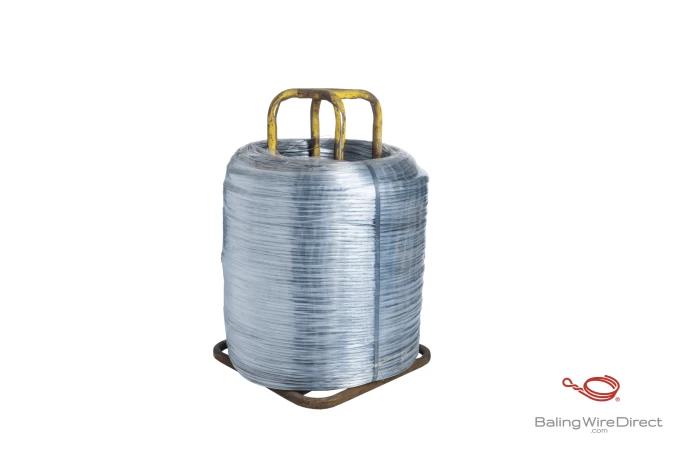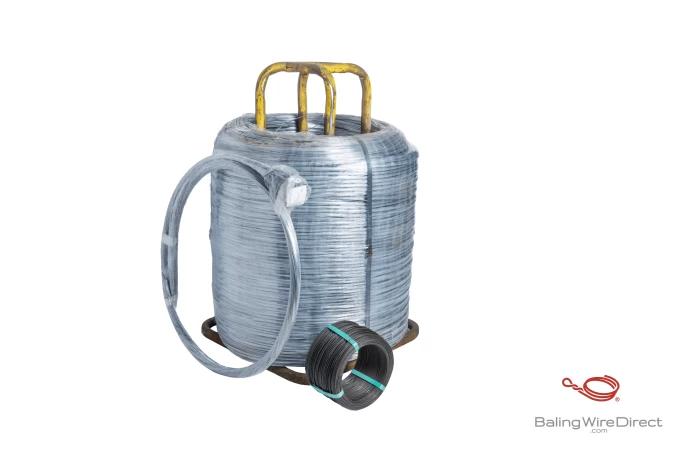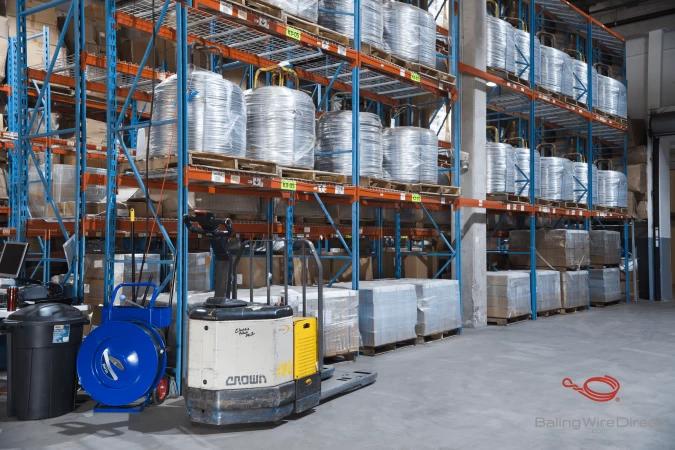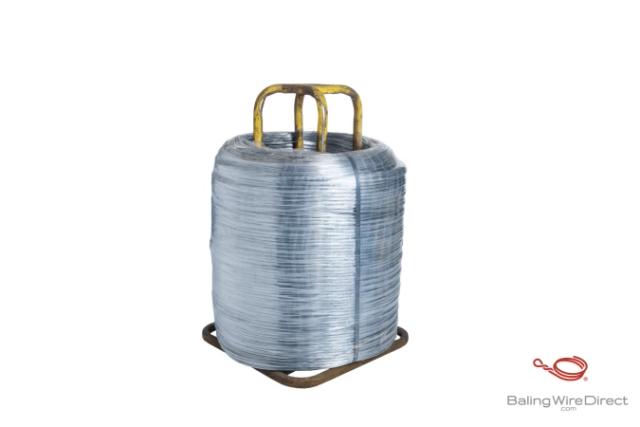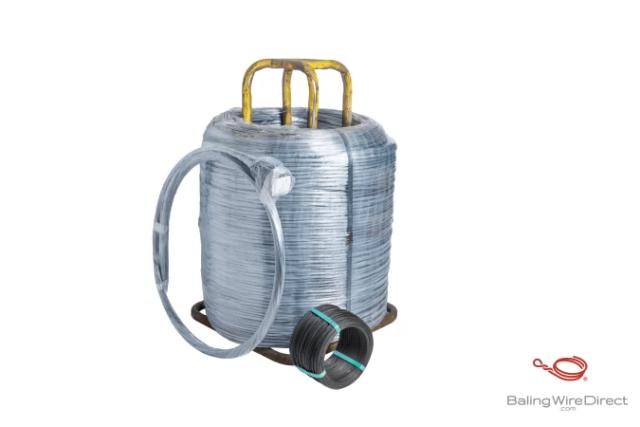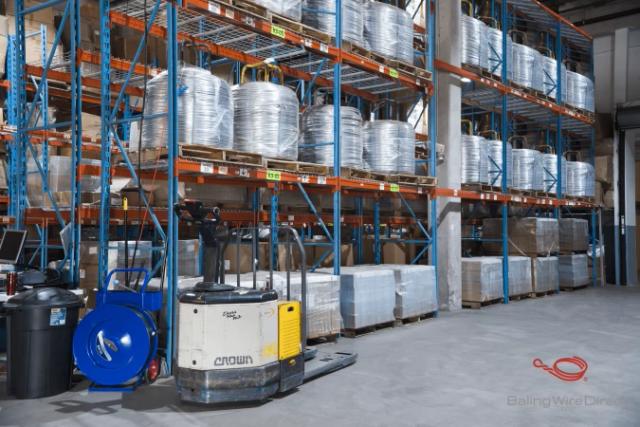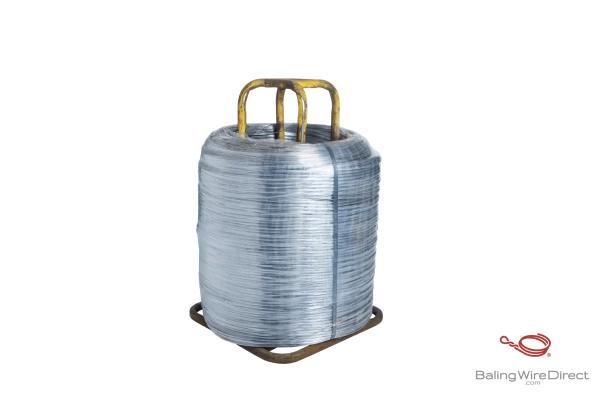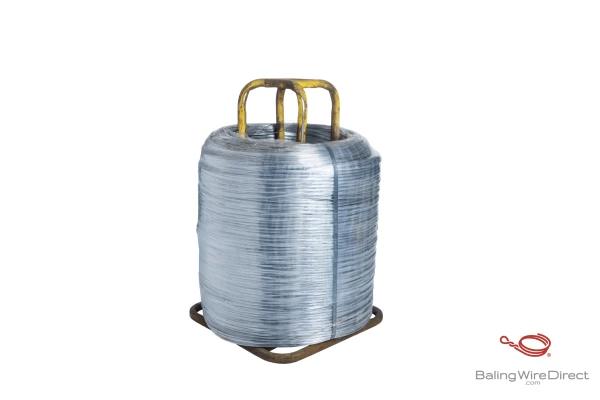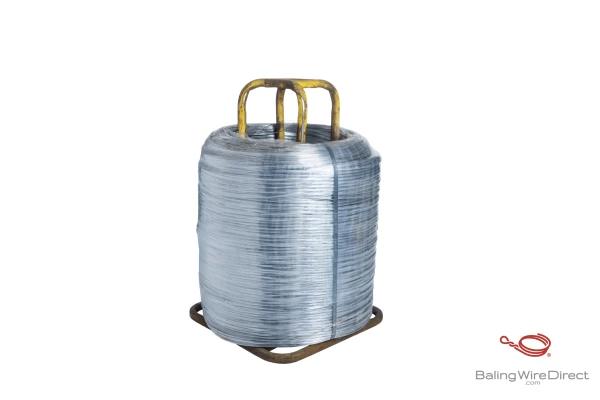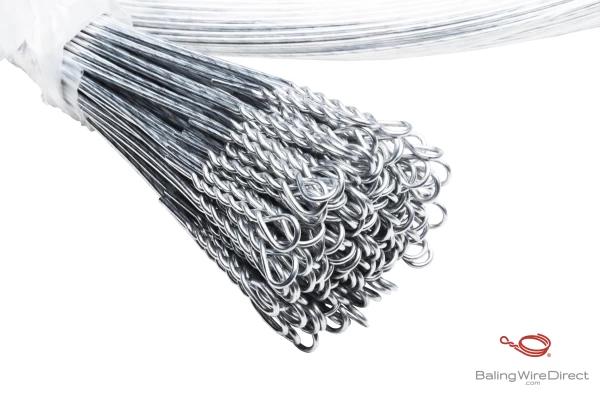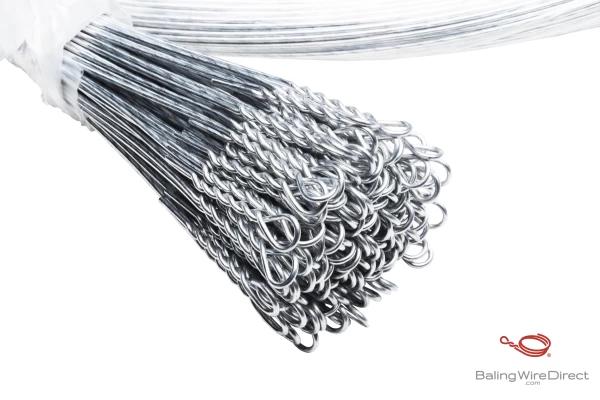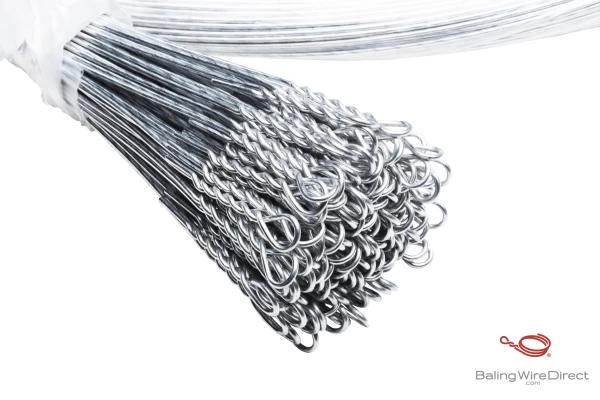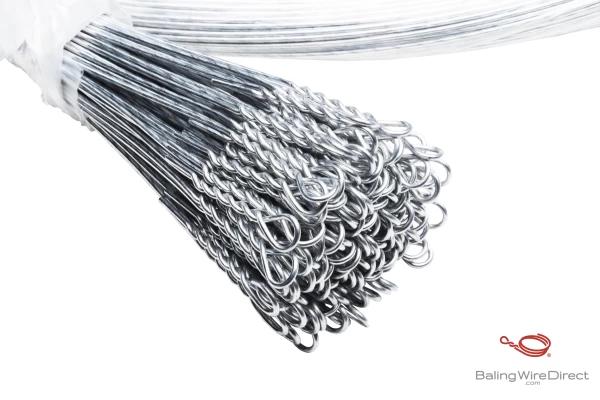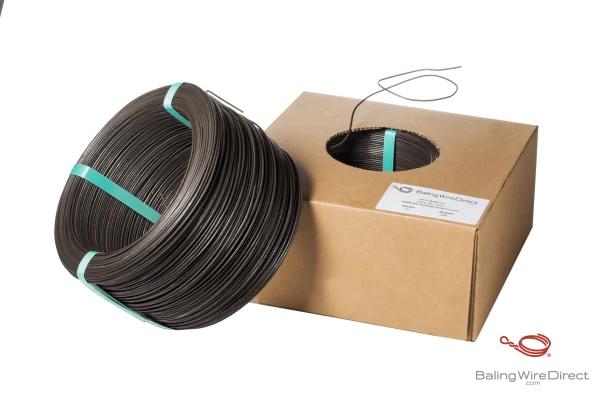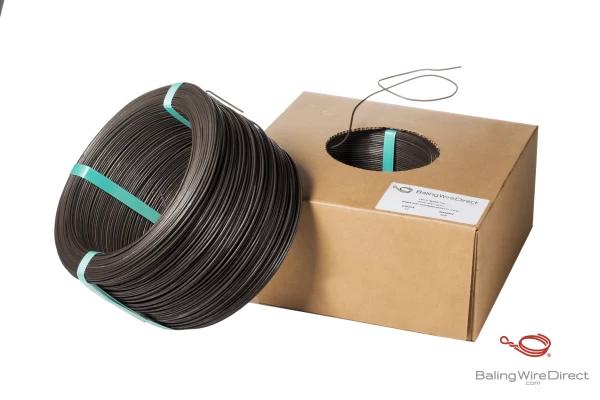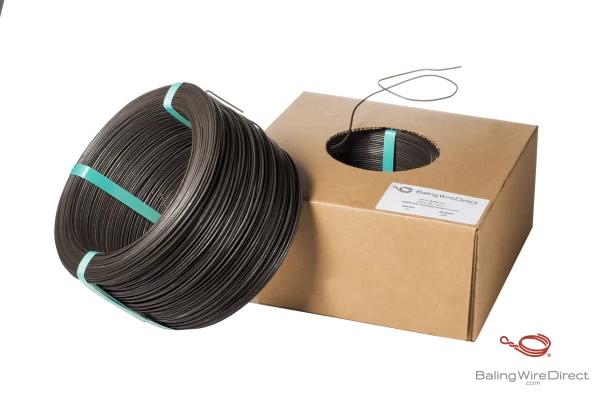12 Gauge Hi-Tensile Galvanized Carrier Wire
$0.00$0.00
| Wire gauge | 12 Gauge |
| Load strength | 1,256 – 1,385 lbs. |
| Tensile strength | 145,000 – 175,000 psi (999.73 – 1206.58 MPa) |
| Diameter (inch) | Actual Size (.104" - .106" / 2.6416 mm - 2.6924 ) |
Add to cart to calculate freight
Wire specifications
| Wire gauge | 12 Gauge |
| Load strength | 1,256 – 1,385 lbs. |
| Tensile strength | 145,000 – 175,000 psi (999.74 – 1206.58 MPa) |
| Diameter (inch/mm) | Standard Wire Gauge or SWG (.104" / 2.6416 mm) | Actual Size (.104" - .106" / 2.6416 mm - 2.6924 ) |
| Elongation | 7 - 11% |
| Carbon grade | 1065 |
| Stem size | 1,330 lbs. (Approx.) |
| Feet per stem | 44,807 feet (Approx.) |
| Quality control | Extensive testing on every carrier |
| Finish | Hot-dip galvanized with molten zinc followed by a protective coating of wax |
Use cases
Our high-quality auto tie wire is the ideal choice for the recycling industry and beyond. Our comprehensive manufacturing results in a reliable high-tensile-strength wire suitable for a wide range of applications, including the following:
American-made baler wire
Our carrier-wire manufacturing process is rigorous and thorough, as is our quality control.
It all starts with the raw materials: steel wire rods furnished by a select group of American mills. Our mills provide complete metallurgical traceability specs and mill-test reports that guarantee the chemical composition necessary to yield the precise load and hi-tensile strength demanded of our wire products.
The materials then get passed on to our team of over 120 specially-trained staff members and 5 on-site engineers. To remove scaling and prepare the surface, the steel wire is fed through a mechanical descaler machine. The descaler subjects the wire to repeated kinetic-stress cycles causing the scale to flake away, leaving behind a clean, smooth wire.
Mechanical descaling allows us to eliminate the use of harsh chemicals. Our environmental commitment continues into the drawing, cooling, and finishing phases of the production process, keeping our staff safe and our environment clean.
The wire passes through a bull-block wire-drawing machine, which allows for fine incremental diameter reductions while monitoring temperature and grain structure organization.
After drawing, chilled air is blown over the wire to produce a homogeneous microstructure optimized for tensile-strength consistency.
Lastly, the wires are hot-dip galvanized, which produces a reliably smooth zinc layer. Galvanization provides extreme protection against corrosion and abrasion. The result is the hi-tensile galvanized wire that can tackle the toughest jobs.
The hot-dip galvanization process
Hot-dip galvanization is our preferred method for applying protective zinc coatings to baling wire. Our manufacturing operation utilizes this 7-stage process:
- Surface preparation: staff first clean the wire, removing impurities for uninhibited zinc bonding.
- Pickling: Next, an acid solution strips away the remaining oxides and scale, readying the surface reactivity.
- Fluxing: a zinc chloride solution prepares the stripped surface and prevents oxidation risks before dipping.
- Galvanizing bath: the wire is then submerged in 450° C molten zinc.
- Alloy formation: sustained heat and zinc contact allow iron molecules from the steel to diffuse into the molten zinc, creating integrated metallic coatings resistant to corrosion.
- Withdrawal: the wire is gradually extracted, metering off excess fluids for a uniform finish.
- Quenching: the galvanized wire rapidly cools through water jet streams which quickly solidify and lock the protective zinc barrier in place.
Our hot-dip process creates an abrasion-resistant, heavy zinc coating that fortifies baler wire for longevity and performance.
Galvanization classes
Baling Wire Direct offers several different classes of galvanization. While we recommend choosing Class 3 galvanization, they both have their own set of advantages:
- Class 1 galvanization is a basic type of coating used primarily for farm applications. It involves a single dip in a zinc coating, resulting in a minimum coating thickness of 0.28 ounces per square foot. However, it starts to rust quickly and typically lasts between 2–11 years, depending on the environment.
- Class 3 galvanization is a stronger, longer-lasting zinc coating that involves two dips in a zinc coating, resulting in a thicker coating of 0.80 ounces per square foot. It is more durable and can last anywhere from 13–30 years. It also uses a three-layer anti-corrosion technology for better rust protection.
Uses for galvanized wire
The protective zinc coating of galvanization makes baling wire resistant to rust and corrosion. This makes galvanized wire suitable for a wide variety of applications:
- Recycling and waste industry: companies use galvanized wire to densely bundle paper, metal, cardboard, and plastic bales for easier handling and transport.
- Agriculture: farmers use galvanized wire for cost-effective hay and straw bales. The galvanization helps preserve bale integrity during outdoor storage and transit. This wire is also an effective, dependable, low-cost fencing solution.
- Construction: construction sites use galvanized baling wire for securing wood, metal and stone salvage and debris.
- Shipping and transport: cargo companies use galvanized wire to secure shipments and prevent damage during loading and delivery trips.
Galvanized baling wire's flexibility, affordability, and superior strength make it the go-to wire option across a broad spectrum of industries and applications.
The BWD commitment to quality
Baling Wire Direct exceeds expectations for baler wire quality and performance. We carefully oversee manufacturing and delivery to provide top-tier products, competitive prices, and a smooth ordering process.
Our proprietary Autoship™ platform sends updates through your chosen contact channel. Easily access tracking details to follow shipments throughout our dependable 1–3 day shipping schedule.
The Autoship™ system enables easy inventory tracking and automatic reorders calibrated to your usage levels. This simple and convenient tool guarantees you receive needed baling wire supplies before they run out.
Our meticulous production control and exceptional distribution infrastructure mean you get quality products right when you need them.
Galvanized wire sizes
Baling Wire Direct sells galvanized hi-tensile wire in 11 and 12 gauges.
Counterintuitively, the gauging system specifies larger digits for smaller wire thicknesses. This inverse relationship stems from the wire production process.
The drawing process pulls steel rods through increasingly narrow dies, forcibly elongating and thinning the wire incrementally. More cycles indicate thinner finished diameters and higher gauges.
Please contact us if you need guidance selecting the optimal gauge for a specific baling wire project.
Here’s a handy reference of gauge size and equivalent diameter for the different wires we sell.
|
Wire gauge |
Diameter in inches |
|
11 |
Standard Wire Gauge SWG (.116") / Actual with tolerance (.119" - .121") |
|
12 |
Standard Wire Gauge SWG (.104") / Actual with tolerance (.104" - .106" ) |
You might be interested in
Baling Wire Direct offers the following types of high-quality wire products.
